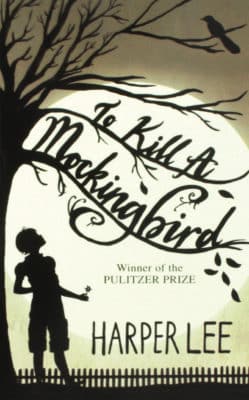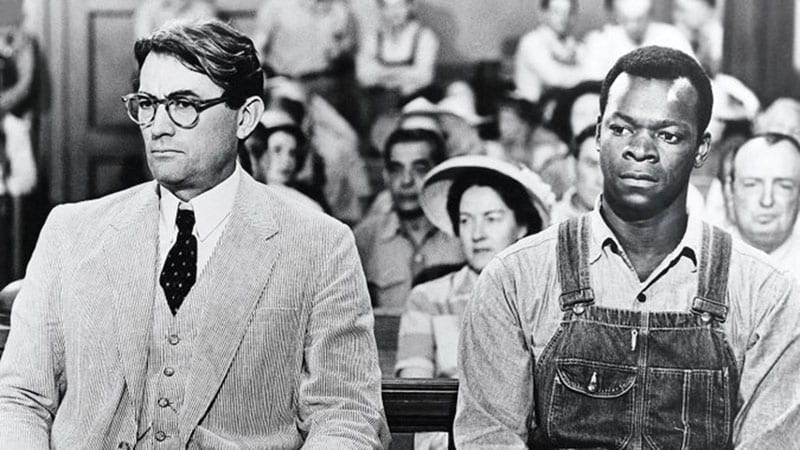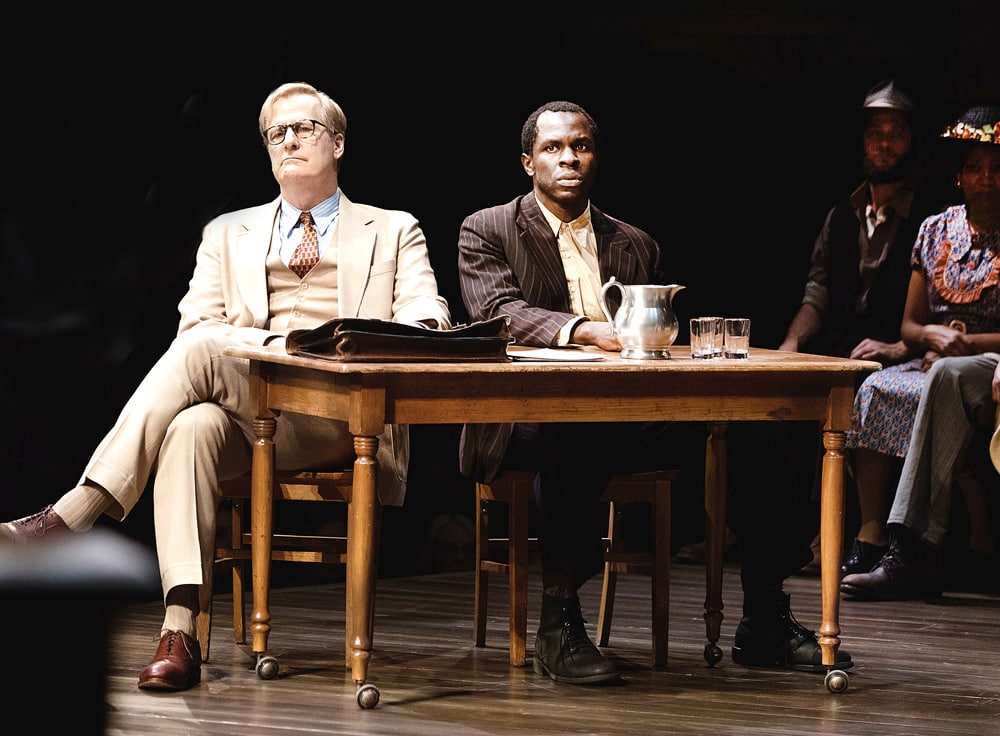
American literature is full of first novels by famous novelists who never quite reached that peak again. Bruce Springsteen, for instance, is a songwriter, not a novelist, but he stumbled on a truth when he recalled that he wrote the songs for his first album, Greetings From Asbury Park, for himself and not with an audience in mind. “That only happens once,” he ruefully observed. From then on, an artist creates work geared toward an audience and also the money men who finance those works. It’s not the same. If a first novel makes the author famous, they lose their anonymity. Consider the lineup of novelists who probably did write their most famous work the first time out: Ernest Hemingway, The Sun Also Rises; Thomas Wolfe, Look Homeward, Angel; Norman Mailer, The Naked And The Dead; Ralph Ellison, Invisible Man and Frederick Exley, A Fan’s Notes, to name a few.
Harper Lee’s To Kill A Mockingbird makes the list. Published in 1960, the novel had good reviews and better sales, achieving even greater fame as a movie starring Gregory Peck as Atticus Finch, the sage attorney of little Maycomb, Alabama. Lee had lost her anonymity, too.
 The novelist was born in 1926 to a prominent Alabama family. Her father, William, was a physician, a lawyer and a member of the state legislature. Lee was educated at local public schools and at both Huntingdon College and the University of Alabama. She left college without earning a degree and like countless young, ambitious people before her, Lee made a beeline to New York City to pursue a literary career. The young novelist would enjoy an improbable success. After years working as an airline reservation agent, Lee’s friends, in 1956, got together to build a fund that would allow her to quit her job and write full time. The gambit paid off. Armed with a literary agent, Lee sold her first novel, To Set A Watchman to a major publishing firm. Publication didn’t come easy. After feuding with her editor for several years, Lee finally delivered a manuscript, now titled To Kill A Mockingbird for publication. The rest is history. The novel won the 1961 Pulitzer Prize for fiction and the 1962 film version won three Academy Awards, including best actor (Peck) and best screenplay (Horton Foote).
The novelist was born in 1926 to a prominent Alabama family. Her father, William, was a physician, a lawyer and a member of the state legislature. Lee was educated at local public schools and at both Huntingdon College and the University of Alabama. She left college without earning a degree and like countless young, ambitious people before her, Lee made a beeline to New York City to pursue a literary career. The young novelist would enjoy an improbable success. After years working as an airline reservation agent, Lee’s friends, in 1956, got together to build a fund that would allow her to quit her job and write full time. The gambit paid off. Armed with a literary agent, Lee sold her first novel, To Set A Watchman to a major publishing firm. Publication didn’t come easy. After feuding with her editor for several years, Lee finally delivered a manuscript, now titled To Kill A Mockingbird for publication. The rest is history. The novel won the 1961 Pulitzer Prize for fiction and the 1962 film version won three Academy Awards, including best actor (Peck) and best screenplay (Horton Foote).
Based on the trial experiences of her father and inspired, possibly, by the Scottsboro Boys case, the novel tells the story of Finch and his unsuccessful legal defense of a local black man, Tom Robinson, charged with sexual assault. Finch was portrayed as both a legal expert and a moral paragon. The film was released during the Kennedy Administration, when the country retained its old optimism over solving social inequities, including those posed by the civil rights movement.
The author and the movement had met. In New York, Lee valued her privacy, but she also enjoyed literary friendships, especially with Truman Capote, whom she assisted on the latter’s own best seller, In Cold Blood. Lee published rarely in the succeeding years, penning such innocuous pieces as “Love—In Other Words,” “Christmas To Me” and “When Children Discover America,” in such high-circulation magazines as Vogue and McCall’s. In 2007, Lee was awarded the Presidential Medal of Freedom by President George W. Bush. Three years later, President Barack Obama awarded the novelist the National Medal of Arts.


Late in his life, T.S. Eliot had long come to terms with the fact that he would never compose a poem as great as “The Wasteland” and so he settled for writing a string of plays with middle class themes. Lee, similarly, was content in knowing that she didn’t have another great novel in her. By the early 2000s, with many of her New York friends now passed or in increasingly failing health, Lee moved back to Monroeville, where she lived in an assisted nursing home. In 2011, she told an Australian reporter why she never published after the great success of her first novel: “Two reasons: one, I wouldn’t go through the pressure and publicity I went through with To Kill a Mockingbird for any amount of money. Second, I have said what I wanted to say, and I will not say it again.”
It was true enough. Lee’s prose narrative, as Capote might have described it, was “as clear as a country stream.” She had something to say and she said it well. In February 2016, Lee died in Monroeville at age 90.
Alas, controversy followed the novelist into her grave. A year before her death, Lee published Go Set A Watchman. The manuscript had preceded To Kill A Mockingbird. While the latter was set in the 1930s, the new novel was set in the 1950s. Scout, the fictional heroine of Mockingbird, is now living in New York City, starting a new life with a career and a boyfriend. When she comes home for a visit, she finds her father now portrayed as a combative attorney not willing to bend on the all-consuming segregation issue. A literary firestorm ensued over not just the novel, but whether the elderly Lee had her wits about when agreeing to publication. A state investigation answered in the affirmative, but doubts persist among friends and critics.
The novel came and went. To Kill A Mockingbird stands as Lee’s masterpiece, a beloved and readable novel of 281 pages, a tale of virtue and honor that has never stopped earning readers the world over.


















